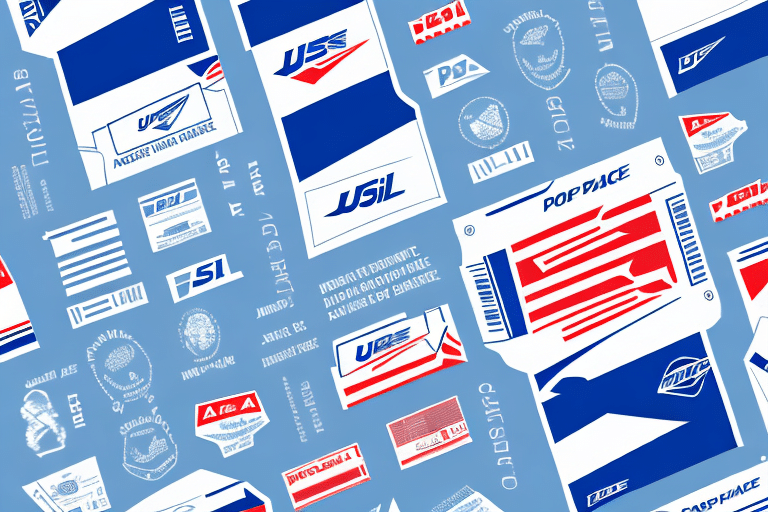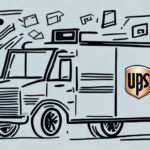Why You Should Insure Your Package with USPS
Insuring your package with USPS provides essential peace of mind for both the sender and the recipient. Whether you're shipping an expensive item or something sentimental, insurance ensures that you can recoup the value of the contents if they are lost or damaged during transit. According to the USPS, indemnity coverage can reimburse you up to the declared value of the package, depending on the level of insurance selected.
Moreover, insured packages convey a sense of security to recipients, making them more likely to accept valuable or fragile items. USPS is a reliable shipping option, but unforeseen events like delays, mishandling, or severe weather conditions can still affect your shipment. By opting for insurance, you safeguard against these potential risks without incurring the higher costs associated with private shipping insurance options. This cost-effectiveness makes USPS insurance an attractive choice for protecting your shipments.
Types of USPS Insurance Coverage Available
USPS offers several insurance options tailored to different shipping needs and package values. Understanding these options can help you choose the best coverage for your shipment:
- Priority Mail Insurance: Automatically included with Priority Mail services, this coverage protects up to $100 of your package's value. It's ideal for shipments where the item's value falls within this range.
- First-Class Mail Insurance: While First-Class Mail does not include automatic insurance, you can purchase coverage separately. This option is suitable for packages valued at $400 or less.
- Priority Mail Express Insurance: For high-value items, Priority Mail Express offers insurance coverage up to $5,000. This is recommended for shipping valuable goods such as jewelry, antiques, or electronics.
It's important to note that USPS insurance covers only loss, damage, or missing items. It does not apply to items prohibited or restricted by USPS, including hazardous materials or illegal substances. Additionally, international shipping insurance may vary based on the destination country's regulations. For comprehensive coverage details, visit the USPS Insurance Services page.
How to Determine the Value of Your Package for Insurance Purposes
Accurately determining the value of your package is crucial when purchasing USPS insurance. The declared value should reflect the actual cost of the items being shipped, including their purchase price and any associated shipping or handling fees. USPS reimburses based on the declared value, not any sentimental worth.
If you're uncertain about the value, consider the following steps:
- Research the item's current market value online.
- Refer to purchase receipts or invoices.
- Obtain a professional appraisal for high-value items like artwork or jewelry.
Additionally, taking clear photographs of the packaged contents can be beneficial if you need to file a claim. Remember that USPS has a maximum insurance limit of $5,000 for domestic shipments. For items valued above this amount, you may need to seek additional coverage from third-party insurers or alternative shipping carriers.
How to Purchase USPS Insurance Online
Purchasing USPS insurance online is a straightforward process integrated into the USPS shipping platform. During checkout, you can select the appropriate level of insurance based on your package’s value. The cost of insurance will be calculated automatically, reflecting the total declared value and the type of service selected.
After completing your purchase, ensure you save a copy of your receipt and the insurance documentation provided. This information is essential if you need to file a claim. For detailed instructions, visit the USPS Claims Information page.
Note that USPS insurance covers only the contents of the package, not the shipping costs. If you require coverage for shipping fees, consider purchasing additional insurance or exploring shipping methods that include shipping cost coverage.
How to Purchase USPS Insurance at a Post Office
If you prefer in-person service, you can purchase USPS insurance directly at a local post office. Inform the postal worker of the package's value, and they will recommend the suitable insurance level. The cost will be calculated based on the declared value and the chosen shipping service.
After purchasing, retain your receipt and insurance proof, as these documents are necessary for any future claims. For more information on in-person insurance purchases, refer to the USPS Claims Information page.
Tips for Filing a Claim with USPS for a Damaged or Lost Package
Despite careful handling, packages can sometimes be lost or damaged during transit. If this occurs, follow these steps to file a successful claim with USPS:
- Complete a Claim Form: You can file a claim online through the USPS Claims page or in person at a post office. Provide detailed information, including tracking numbers, item descriptions, and the declared value.
- Submit Supporting Documentation: Include any necessary documentation such as receipts, photos of the damaged item, and proof of value. These documents strengthen your claim and expedite the process.
- Monitor Your Claim: After submission, USPS will process your claim, which can take several weeks. Stay in contact with USPS for updates and respond promptly to any additional requests for information.
- Receive Reimbursement: If your claim is approved, USPS will issue a reimbursement based on the declared value. If denied, you have the option to appeal the decision or seek legal action for high-value items.
Ensure you adhere to USPS’s guidelines and deadlines for filing claims to maximize the chances of a successful reimbursement. Detailed claim procedures can be found on the USPS Claims page.
Common Reasons Why Packages Get Lost or Damaged in Transit
Understanding the common causes of package loss or damage can help you take preventive measures. Here are some frequent issues encountered during shipping:
- Inclement Weather: Extreme weather conditions like heavy rain, snow, or hurricanes can disrupt delivery schedules and increase the risk of package damage or loss.
- Human Error: Mistakes by postal workers, such as misrouting or mishandling packages, are common reasons for lost or damaged shipments.
- Inadequate Packaging: Using insufficient packaging materials or inappropriate box sizes can lead to items being damaged during transit.
- High-Value Items: Packages containing valuable items are more susceptible to theft or mishandling, making proper insurance and secure packaging essential.
Additionally, improper labeling can cause delays or misdeliveries. Ensure that shipping labels are clear, legible, and securely attached to prevent confusion during transit.
How to Pack Your Package Properly to Minimize Damage in Transit
Proper packaging is crucial to safeguarding your items during shipping. Follow these best practices to minimize the risk of damage:
- Select the Right Box: Use a sturdy, appropriately sized box for your items. Avoid reused boxes that may have weakened structures.
- Use Adequate Cushioning: Fill the box with cushioning materials like bubble wrap, packing peanuts, or foam inserts to absorb shocks and prevent movement.
- Protect Fragile Items: Wrap each fragile item individually with packing paper or bubble wrap to provide extra protection.
- Seal the Box Securely: Use high-quality packing tape to seal all seams and reinforce the corners of the box to prevent it from opening during transit.
- Avoid Empty Spaces: Fill any voids in the box with additional packing materials to prevent items from shifting inside.
By following these packaging tips and insuring your package with USPS, you significantly reduce the risk of damage or loss, ensuring your shipment arrives safely at its destination.






















